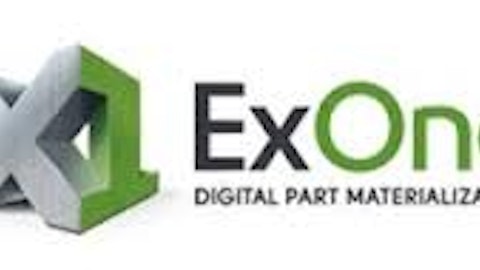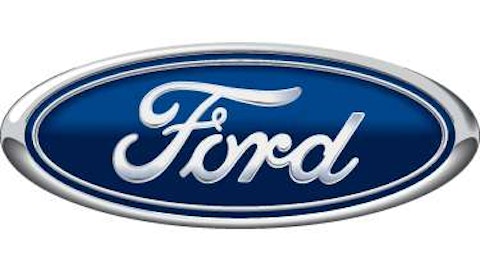Tesla Motors Inc (NASDAQ:TSLA) unveiled a new system that would allow its EV drivers to swap battery packs in about 90 seconds, a duration that’s way less than the time it takes to fill up a conventional car at a gas station. Tesla Motors Inc (NASDAQ:TSLA) plans to install these new battery-swapping systems throughout its network of supercharging stations, which the company is already building.
According to Elon Musk, Tesla Motors Inc (NASDAQ:TSLA)’s CEO, the new system is to go a step further in convincing people that EVs (Tesla EVs, actually) can be more convenient than gasoline cars. The outlook is that whenever a car owner drives a Tesla Motors Inc (NASDAQ:TSLA) auto into any of the company’s supercharging stations, he/she has a choice to choose whether to go for fast charging, which takes about an hour or get his/her battery replaced within 90 seconds. The fear that an EV won’t reach a desired range is one big stumbling block that’s limiting the EV space.
I’m of the opinion that whichever company provides the best solution to this fear of range sets itself as a major force within the EV space, one that cannot be overlooked when looking to invest in this industry.
What are other EV makers doing about their batteries?
Tesla Motors Inc (NASDAQ:TSLA) isn’t the only EV maker that’s working to provide better battery services. Nissan Motor Co., Ltd. (ADR) (OTCMKTS:NSANY) recently announced that it’s going to introduce a battery replacement system for its LEAF products in the US, which is expected to start during the first half of 2014. But Nissan Motor Co., Ltd. (ADR) (OTCMKTS:NSANY)’s battery replacement system would work differently than that of Tesla Motors Inc (NASDAQ:TSLA). Unlike Tesla, Nissan Motor Co., Ltd. (ADR) (OTCMKTS:NSANY) is planning to make its own battery replacement system subscription-based.
Nissan’s system only works for batteries that have fallen below 70% of initial output. I don’t see this system as what the EV world desperately needs at the moment. The issue on ground doesn’t have to do with the question “how many miles/years can this battery run before it becomes defunct?” The real issue is “Does this battery have the capacity to get me to my destination?” which Nissan’s replacement system doesn’t exactly answer.
But something is fishy here. If I were to charge my EV, I’d prefer to charge it fully and so would just anybody do. Why don’t they tell us the time it’d take to charge it fully. Last time I checked, the last 20% in the charging process takes longer to complete than the first 20%. This makes me think that, in the case of SAE Combo DC Fast Charger, the last 20% takes more than 20 minutes to complete, which won’t actually make it preferable to Tesla’s supercharger that provides full charge in an hour. Besides, I don’t think any driver would go to a charging station just to get an 80% charge. Having made this comparison, it’s quite obvious that Tesla is ahead in terms of battery technology/services.
What’s in it for investors?
Tesla has only announced that it’s going to introduce this system; it’s yet to start operating it.
Here is the thing. First, battery swapping isn’t going to be free of charge; drivers will have to pay at least $50, unlike the supercharging that would be offered free. This would invariably increase Tesla’s revenue and profit quite significantly, although the company insisted that the system isn’t aimed at driving profits. The payoff for Tesla might not be immediate, considering that Tesla’s investing about $500,000 to install each swapping station. Let’s not forget that the number of Tesla autos currently in existence is not enormous. But, we’re not investing only for the present (assuming you’re a Fool like me); we’re investing for the future.
Second, as I stated above, this move goes further to deal with the range anxiety problem, which in my opinion, is the number one stumbling block to the adoption of EVs. I call it number one because more complaints have ensued because of the range an EV can cover than any other EV-related issue – including the high price tags of EVs.
Having followed the EV market closely, I’ve seen increased adoption of EVs once drivers can be assured that they’d reach their destinations with an EV. Therefore, I see this as a strategic move to drive sales. Here is the logic. If I were to buy an EV, I’d consider which maker cares the most if my car gets me to my destination. This would make me research battery capabilities and charging infrastructures. And with this new service, the scale would tip in Tesla’s favor in just about any situation. Long story short, Tesla would see its sales head north owing to this development. As usual, increasing sales are a good indicator that a company is worth an investment.
Third, we know that announcements like this, especially when implemented, go a long way to change the status of a stock positively. As such, I expect that when Tesla launches this system, auto enthusiasts would become more comfortable owning and driving its cars, which could help the company’s stock gain more traction.
But there are some challenges
The latest challenge is that which threatens Tesla’s sales in New York. This has to do with auto dealers who aren’t cool with the idea of Tesla sidestepping the dealers and selling its autos by itself. They want to be in the picture. As a result, a court injunction that would ban Tesla from selling its auto directly to consumers in the state is looming.
As per the idea of battery swapping, there is a risk that the system might fail, considering that it was the same thing Better Place tried and landed itself in bankruptcy. Business analysts, like this one in Forbes, have begun to give their verdicts on this approach with many of them believing that Tesla is going to be like Better Place. But, Better Place never manufactured an EV. It only offered its services to autos made by other companies. But Tesla makes EVs and I believe the company has the vision to make it work. The worst-case scenario would be that the system fails. But Tesla still makes EVs, so that won’t put it out of business like Better Place.
Foolish bottom line
Many auto investors would find it hard to invest in Tesla because it’s a growth company. In addition, unlike General Motors Company (NYSE:GM), Ford Motor Company (NYSE:F) and Nissan that make autos other than EVs, Tesla relies solely on EVs for its revenues. So there is a fear that Tesla has nothing to fall back to in an event that the EV vision fails. But I’d like to remind you that more of Tesla’s Model S were sold during the first quarter than any other auto – the well-established ones – that costs in the range of Model S. And again, investing is generally a risk – a calculated risk. Drawing from my arguments, I see investing in Tesla a calculated risk that’s worth taking.
Criag Adeyanju has no position in any stocks mentioned. The Motley Fool recommends General Motors and Tesla Motors (NASDAQ:TSLA) . The Motley Fool owns shares of Tesla Motors . Criag is a member of The Motley Fool Blog Network — entries represent the personal opinion of the blogger and are not formally edited.
The article Here Is One Less Excuse Not to Invest in Tesla originally appeared on Fool.com is written by Criag Adeyanju.
Copyright © 1995 – 2013 The Motley Fool, LLC. All rights reserved. The Motley Fool has a disclosure policy.




